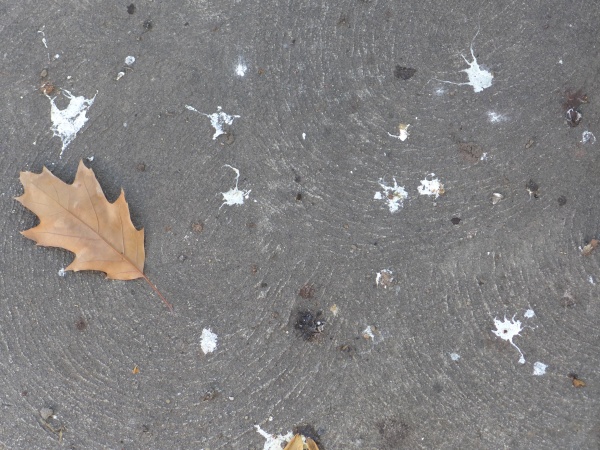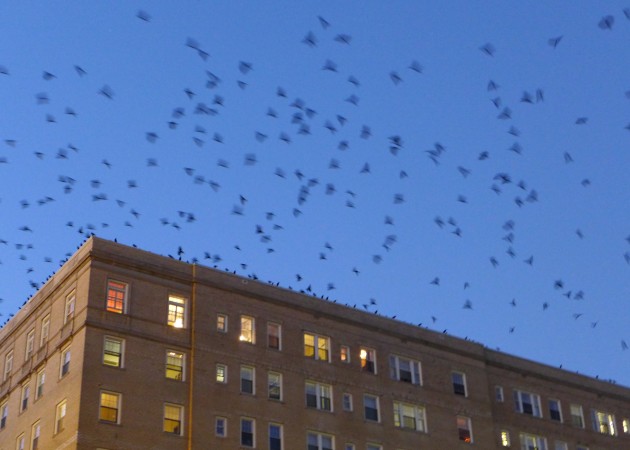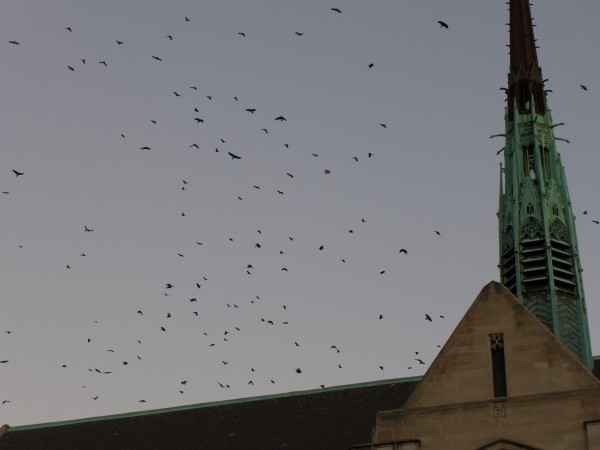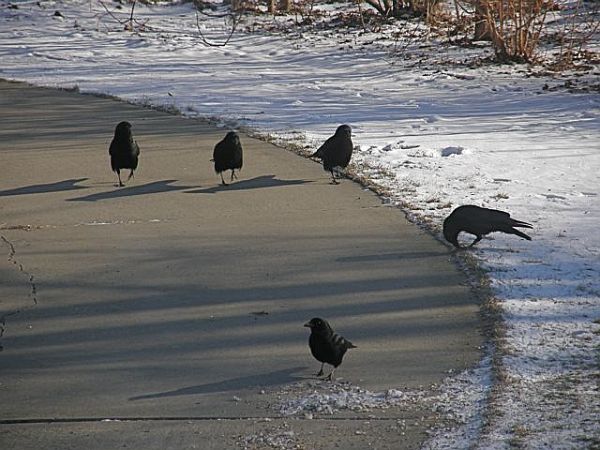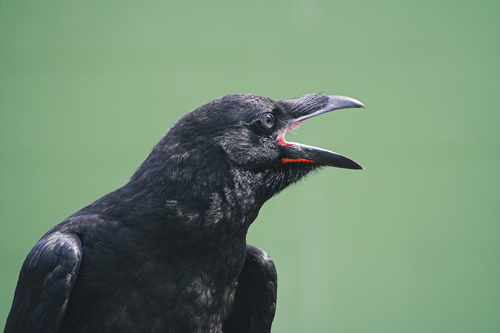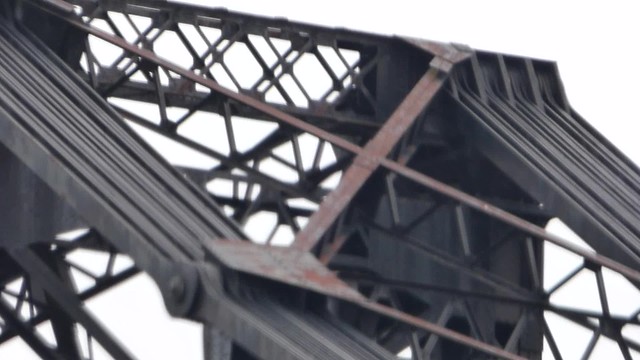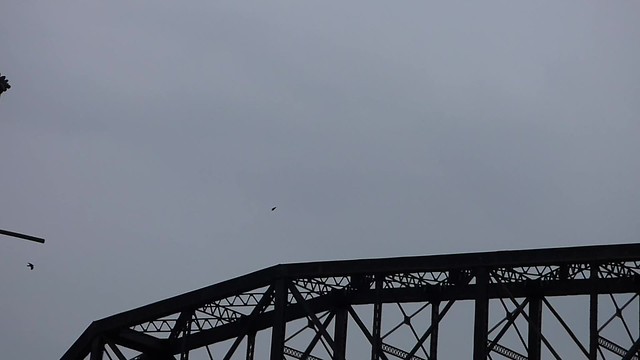Thousands of crows roosting at the University of Pittsburgh this month have finally worn out their welcome. Their slippery “fallout” on the sidewalks, especially near Heinz Chapel, tipped the scales against them. This week Pitt began using crow scare tactics to make them move.
Scaring crows is a noisy process that takes days or weeks to be effective. Pitt’s first step is to play a very loud recording of screeching birds in distress and kakking peregrine falcons (click here to hear). The tape was playing yesterday at 4:30pm near Clapp Hall, so loud you could hardly think!
If the recording doesn’t work the next steps are even noisier. The video above shows how Penn State uses pyrotechnics to convince their crows to leave, but it can take a while. Crow expert Margaret Brittingham explains how the crows learned to circumvent the deterrents with amusing results.
So now I’m curious. How long will it take to convince the Pitt crows to leave? And where will they go?
Time will tell.
p.s. This is the first year that Pitt’s “new” peregrines, Hope and Terzo, have experienced the scare-crow recording. I don’t know what Terzo’s reaction is but Hope has been visiting her old site at Tarentum a lot lately. She was there yesterday afternoon.
(p.p.s. On the audio track the single crow sounds like a raven to me.)
(video from Penn State University)
